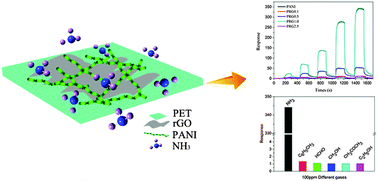Ultrasensitive room temperature NH3 sensor based on a graphene–polyaniline hybrid loaded on PET thin film†
Abstract
This research was motivated by the need to develop a smart ammonia (NH3) sensor based on a flexible polyethylene terephthalate (PET) thin film loaded with a reduced graphene oxide–polyaniline (rGO–PANI hybrid) using in situ chemical oxidative polymerization. The sensor not only exhibited high sensitivity, good selectivity and a fast response at room temperature but was also flexible, cheap and had wearable characteristics.


 Please wait while we load your content...
Please wait while we load your content...